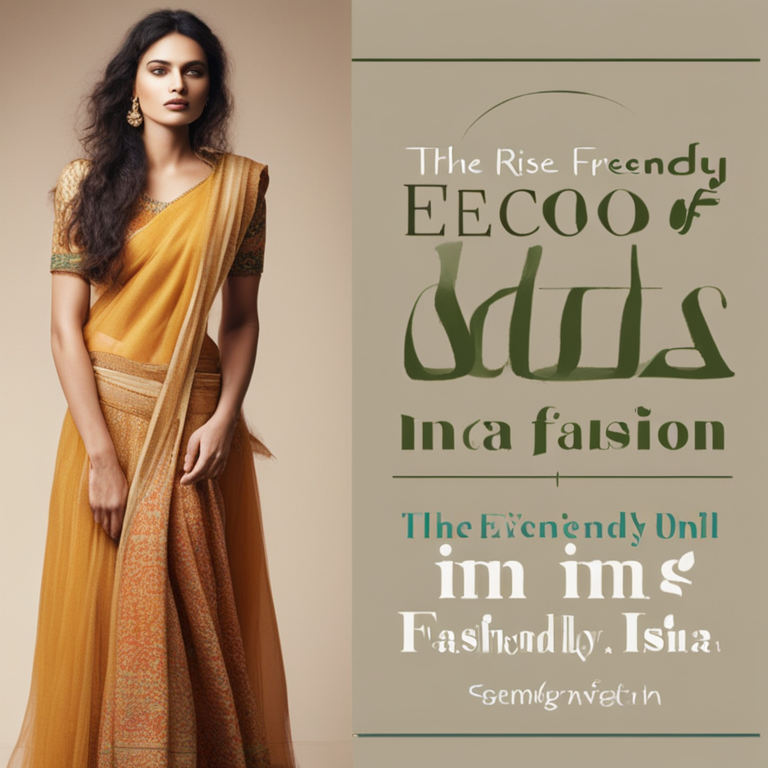Introduction:
In recent years, there has been a significant shift in the fashion industry towards more sustainable and eco-friendly practices. India, a country known for its vibrant and diverse fashion scene, has been quick to embrace this change. From sustainable fabrics to ethical production practices, eco-friendly fashion is on the rise in India. In this blog post, we will explore the reasons behind this trend, the key players in the industry, and provide tips on how to incorporate eco-friendly fashion into your wardrobe.
Subheadings:
1. The Environmental Impact of Fast Fashion:
Fast fashion, characterized by quick turnover and low prices, has taken a toll on the environment. The use of synthetic fibers, toxic dyes, and unsustainable production practices have led to pollution of waterways, deforestation, and greenhouse gas emissions. As consumers become more aware of these issues, they are seeking out alternatives that are kinder to the planet.
2. The Rise of Eco-Friendly Fashion Brands in India:
In response to growing demand for sustainable fashion, a number of Indian brands have emerged that prioritize ethical production and eco-friendly materials. Brands like Bhu:sattva, No Nasties, and Upasana are leading the way in the eco-fashion movement, using organic cotton, natural dyes, and traditional craftsmanship to create stylish and sustainable garments.
3. Sustainable Fabrics in Indian Fashion:
One of the key components of eco-friendly fashion is the use of sustainable fabrics. Organic cotton, hemp, bamboo, and Tencel are just a few of the eco-friendly materials being used by Indian fashion designers. These fabrics are not only better for the environment, but also for the workers who produce them, as they often require less water and pesticides to grow.
4. Tips for Embracing Eco-Friendly Fashion:
– Look for certifications like GOTS (Global Organic Textile Standard) and Fair Trade when shopping for sustainable fashion.
– Invest in timeless, high-quality pieces that will last for years, rather than buying into fast fashion trends.
– Support local artisans and designers who prioritize ethical production practices.
– Consider renting or swapping clothes for special occasions, rather than buying something new.
Conclusion:
The rise of eco-friendly fashion in India is a positive step towards a more sustainable and ethical fashion industry. By supporting brands that prioritize the environment and ethical production practices, consumers can make a difference in reducing the negative impact of fast fashion. As the movement grows, we can expect to see more innovative and stylish eco-friendly options available in the Indian fashion market. So, next time you’re shopping for clothes, consider choosing eco-friendly fashion and make a positive impact on the planet.
👉 [Best Deals on Amazon!](https://amzn.to/abcd) | [Flipkart](https://fkrt.it/xyz123)
